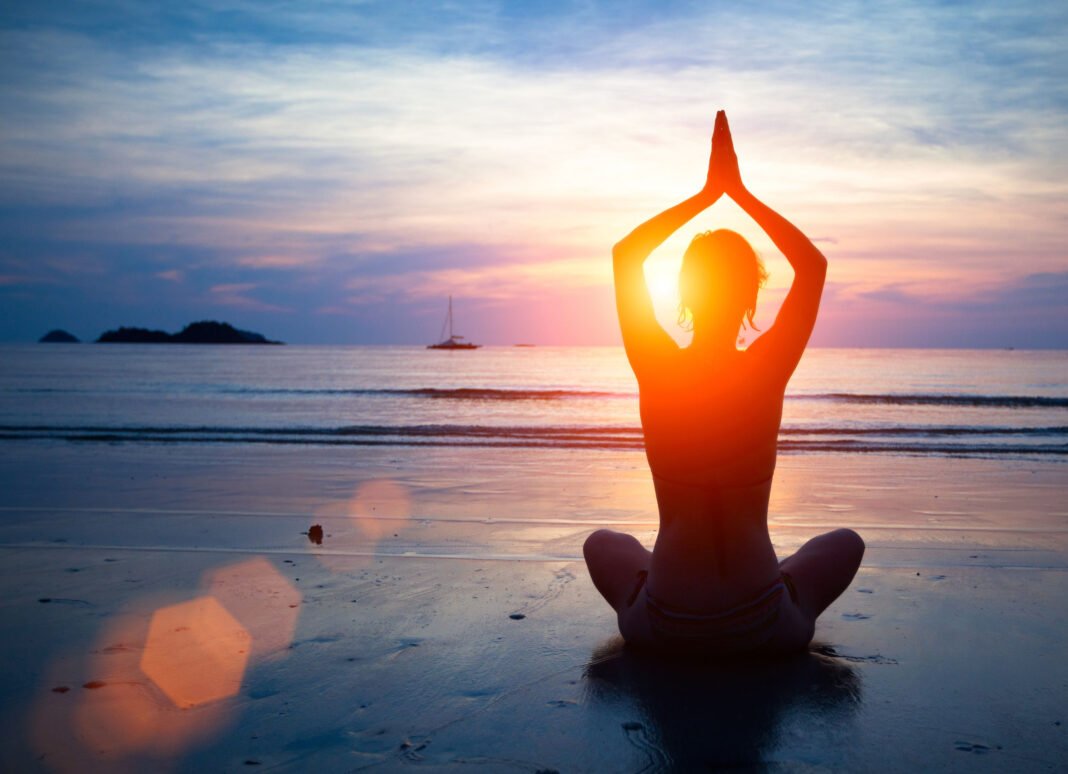I’m no stranger to anxiety. In fact, it’s what brought me to yoga therapy in the first place. After years of debilitating anxiety and frequent panic attacks, yoga therapy offered me a pathway to healing that has supported my mental health for over 30 years. So how does yoga therapy help anxiety and what are the tools that yoga therapists use to support students experiencing symptoms of anxiety? This blog offers insights and practical tips you can start using right away to relieve anxiety with yoga therapy.
It’s not just you – anxiety is everywhere.
26.3% of Australians aged 16 to 85 – that’s over a quarter – have experienced an anxiety disorder. For women, that figure increases to 32% (20% for men), while a 2021 Australian study showed 67% of transgender people surveyed experienced anxiety.
Support seeking is growing rapidly, but only around 50% of people with anxiety are getting treatment. That’s a big gap and Yoga Therapy is a powerful, evidence based adjunctive therapy that has the potential to offer valuable mental health support.
What can Yoga Therapy do?
Yoga therapy has been shown to be highly effective in regulating the autonomic nervous system. The many tools of yoga – from breathing techniques and meditation to physical postures and mantra recitation – can move the body from ‘high alert’ (sympathetic nervous system functioning) to a state of restful calm (parasympathetic nervous system functioning). This in turn reduces anxiety.
Yoga therapy’s holistic approach to anxiety is uniquely holistic. Yoga Therapists look at students through the lens of the 5 Koshas (or 5 ‘sheaths’), viewing each individual as a multi-dimensional being.
The 5 Koshas Model

Both the causes and the symptoms of anxiety can show up in any one of these dimensions. Through a collaborative process, the Yoga Therapist and student work to identify the symptoms and causes and develop practices that meet the needs of individual students.
For example, one student might experience anxiety as physical pain. Another student may experience feelings of dread. A third may experience a racing heart and shortness of breath.
The tools we use to support each student can focus on any one – or any combination – of the 5 dimensions of the self, according to what is most appropriate to their circumstances.
Teaching Yoga to Manage Anxiety
As every yogi knows, there are many different yoga asanas, and multiple approaches to each asana. Not all yoga asana practices are supportive for people experiencing anxiety. While every student will need a practice that meets their individual needs, the guidelines below offer a framework for determining how to approach asana as a therapeutic practice for students with anxiety.
Supporting the parasympathetic nervous system
The parasympathetic nervous system is triggered by the exhale. Yoga therapists offer techniques that emphasise the exhalation, to help move the nervous system from ‘fight, flight, freeze’ into ‘rest and digest’. However, yoga therapists understand that it’s important to work with the breath in a very gentle and subtle way. The golden rule is: Always work with the student’s capacity. If a student has a short, irregular breath, it can be counterproductive to ask them to start practicing long, slow exhales. Trying to regulate a client’s breath in this way can actually trigger feelings of anxiety. Instead, yoga therapists work very slowly, offering practices that naturally extend the exhale without stress or effort.
An example of this is teaching simple, slow, dynamic forward bends (such as cat to child, focusing on a slow and gentle movement back to child). See the digital module accompanying this workbook for examples of asanas that trigger the parasympathetic nervous system.
Anxiety and Ayurveda
Yoga therapists frequently incorporate their deep knowledge of Ayurveda, India’s ancient healing science, to support their clients. According to Ayurveda, symptoms of anxiety are related to an imbalance in one of the three basic human constitutions – Vata dosha. When Vata dosha is imbalanced yoga therapists often recommend gently warming postures (think a long, calm hold in Warrior 2), gentle forward bends, postures that are held low to the ground (think squatting postures), slow or static postures.
Yoga Breathing Techniques and Anxiety
Yoga’s profound understanding of breath and energy (prana) is one of it’s most powerful aspects. As mentioned earlier in this blog, breathing practices (pranayama) that gently, slowly and naturally extend the exhale can support a student to move from ‘fight or flight’ into ‘rest and digest’. But this needs to be taught mindfully and based on each students capacity.
How to practice pranayama for anxiety
-
With focused awareness and feeling
-
Within comfortable limitations of individual student
-
After careful preparation (gentle movement, relaxation and understanding about the practice)
-
Focus on exhaling from the lower abdomen
-
Respect the vinyasa krama (special steps) of each pranayama – take it slowly and step by step
-
Choose and adapt the pranayama technique to meet the individual needs of each student
But wait, there’s more…
A skilled yoga therapist has many yoga tools at their disposal. Chanting, mantra, meditation, deep relaxation practices and many other techniques can be deployed to support clients experiencing meditation. There is no ‘once size fits all’. Yoga therapy is always tailored to the need of individual students – one of the reasons why it is so effective.
If you have a client experiencing anxiety, work in partnership with them to explore some of the approaches offered in this blog. Remember, the client is always the expert in their own health – as a practitioner, your role is to support them to find that path and practices that empower them to manage their own wellbeing.

